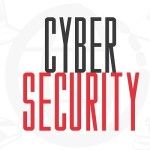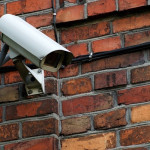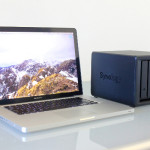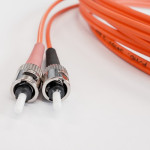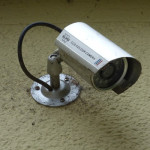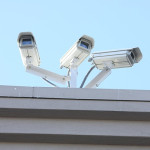The Advantages & Disadvantages Of Nanny Cams
Nanny cams can give parents peace of mind when they’re away from home. They can be hidden or installed in plain sight to monitor the nanny and children’s activities and behaviors. While some see as it as helpful, others may see it as an invasion of privacy or an uncomfortable situation.
Of course, there are rules and regulations in place to combat these issues. Recording a video of anything that happens in your home is legal, however, you must have a legitimate reason for doing it. Monitoring your baby or caregiver falls into that category, but regardless of whether the surveillance camera is hidden or not, they must be located in public areas of the house such as the kitchen or living room. Video recording in areas where there is an expectation of privacy (such as the bathroom or your bedroom) is not permitted.
When it comes to audio recording, you must inform and get the consent of the person being recorded. Because of this, often times nanny cams do not record audio. If you do record a video with audio that has evidence of abuse, the footage would be inadmissible in court and you could be liable for breaking privacy laws.
With that said, if used appropriately and within legal limitations, nanny cams can be a useful tool for parents. If you are considering installing a nanny cam, here are some of the pros and cons.
Pros
- Peace Of Mind
Especially with new parents, it can be hard leaving your children in someone else’s care. With a nanny cam, you can ease your worries by checking in on your children to see that they are safe. - Nanny Behavior
If your children are young, they may not be able to tell you what is happening while you’re away. You can’t always rely on feedback from friends and neighbors who may see your children and nanny together at the park or school. The nanny cam allows you to monitor behavior and address any issues accordingly. - Connection
For parents who feel guilty for going back to work and missing quality time with their children, nanny cams can enable them to feel more of a connection as they can periodically check in and see what their kids are up to.
Cons
- Trust
Aside from privacy issues, the person being recorded may feel violated or offended if they find a hidden camera. To combat this issue, it’s best if you are upfront and honest about your plans to install a nanny cam. Most nannies are comfortable working in the presence of a nanny cam. - Misuse
Your nanny cam should be used to deter or prevent potential neglect or abuse, not used to capture it. Communicate your expectations and take action if you feel something isn’t right. - Legalities
As mentioned, you must abide by the law. Look into your state’s laws regarding privacy and recording and be sure that your nanny cams and surveillance system are in compliance.
How have nanny cams helped you as a parent? Share with us on Facebook, Twitter, LinkedIn, and Pinterest.
Need help choosing the right nanny cam or surveillance system for you? Contact us at 888-203-6294 and we will be happy to discuss your options. You may also browse our stock of IP security cameras and other surveillance equipment online at SecurityCamExpert.com.
Cyber Security Awareness For Consumers
Cyber security is extremely important, especially in this day and age, which is why October is recognized as National Cyber Security Awareness Month. Without the proper safeguards in place, your identity and personal data are at risk. Here are some cyber security tips to help raise awareness and protect you from cybercriminals.
Watch What You Share
Cybercriminals are using more advanced tactics to gain information. Attacks are designed based on extensive research of the information you share online. Cybercriminals scour social media for various personal details, from workplace and job titles to friends and activities. They use this information to manipulate unsuspecting victims, a tactic known as social engineering.
Examine Your URLs
Pay close attention to URLs. As mentioned, criminals are using smarter approaches. They use branded emails with logos and fonts that look like legitimate retailers to get you to click on malicious links.
To safeguard against these scams and avoid being redirected to a fake site, always type the retailer’s address into your browser. And always make sure the site begins with https:// (as opposed to http://). The “s” stands for secure and makes a big difference in your online safety.
Secure Payment Methods
Whenever you enter your credit or debit card details into an online form, you are susceptible to interception from cyber criminals. Dodge these risks by setting up a dedicated online shopping account with strict credit and overdraft limits, and with only enough money to buy what you need.
Listen To Your Suspicions
Trust your instinct. If it seems suspicious, don’t use it. Make sure you are keeping track of the retailers you are expecting shipments from. If you receive an email that contains tracking information from a courier service or retailer you have not used, do not open it. It will likely contain a tracking URL which is a malicious link in disguise. And the same goes for attachments as these could contain malicious code. To err on the safe side, manually type the courier service website into your browser.
Fallen Victim? Take Immediate Action
If you think you may have fallen victim to cyber crime, act fast!
- Report It To The Police
Many cases go unreported every year, lending to the success rate of these cyber crimes. By reporting it to police, you can aid cyber criminal investigations help to shut down these operations for good.
- Report It To Your Bank
As soon as you notice unusual account behavior or suspect something may be wrong, contact your bank and have your card cancelled immediately. In some cases, depending on the circumstance, you may be able to reverse the fraudulent charges and recover your money.
- Report It To The Business
The business you thought you were buying from would benefit from knowing they are being impersonated online as you may not be the only victim. The business has the resources to track down the perpetrators and is likely familiar with the processes of getting suspicious websites blacklisted or shut down.
- Do Not Negotiate
Ransomware attacks usually involve locking you out of your PC and asking for a ransom (in untraceable currencies like Bitcoin) to regain control. If you give in and pay the ransom, you will be identified as a soft target and they will be back.
Do you have any cyber security tips to share? Connect with us on Facebook, Google+, Twitter, LinkedIn, and Pinterest.
For your security cameras and CCTV video surveillance needs, please visit SecurityCamExpert.com today! Call 888-203-6294 to request a free quote or schedule a site survey.
Dahua & Hikvision Ban
In case you hadn’t heard, the 2019 National Defense Authorization Act was recently signed into law. The whole process began in May of this year, when the US house passed the bill, and then on August 1st the Senate passed the bill. Several days later, the President made it official by signing it into law on August 13, 2018. The 2019 NDAA has a particular impact on the security industry as it bans both the purchase and use of Dahua and Hikvision and their OEMs in the US government and US government-funded contracts.
Although the Dahua and Hikvision ban will begin on August 13, 2019, the effects of this act are already being felt by Dahua and Hikvision. Stocks for both companies have dropped noticeably since the passing of the NDAA and we can expect further decline. Despite the delayed enforcement, there is no sense in purchasing and using equipment now that will soon be phased out.
Extending the ban to OEMs will eventually trickle down and impact wholesale distributors. Buyers will be concerned with potential security risks, possible issues with prospective integration with public or government systems, and future legislation at the state or local level. In addition, this will impact consumers outside of the US, as negative media coverage may make them feel wary of the security and dependability of Dahua and Hikvision products.
Only time will tell what the true implications of the 2019 NDAA will be. Share your thoughts on the ban with us on Facebook, Google+, Twitter, LinkedIn, and Pinterest.
Visit SecurityCamExpert.com to browse our extensive selection of quality security cameras, CCTV surveillance packages and security equipment for your home or business. If you have any questions or would like a free quote, please feel free to contact us 888-203-6294.
CCTV Surveillance Cameras: Maintenance & Troubleshooting Tips
After you purchase and install a home security camera system, it is important to maintain it in order to preserve its quality and performance. From the surveillance cameras to the cables to video storage, all parts must be working properly to ensure optimal surveillance and security. Here are some helpful maintenance and troubleshooting tips for your surveillance system.
Maintenance
- Hard Drives
Check your hard drive regularly by simply playing back recent video. To make sure your cameras are properly recording, check the field of view and filter through different dates and times. Make sure you are getting the proper recording duration. A surefire sign that something is wrong is if the duration of footage stored has significantly decreased. For example, you used to get weeks or months of footage, but now it seems you are only getting a few days worth.
- DVR & Security Cameras
Cooling fans assist in preventing your DVR from overheating. Unfortunately, when they suck in the cool air, dust begins to build up as well. The accumulation of dust can damage the fan, resulting in overheating. Cleaning your cooling fan regularly can prevent this and is relatively easy. Computer dust sprays are available at many computer stores and you simply aim at the vent areas and spray.
The IR (Infrared) lights on your security cameras tend to attract spiders and bugs. Because of this, spiders tend to build their webs around the cameras in order to catch the bugs attracted to the light. Consequently, these spider webs interfere with your videos. Check your playback or live feed to see which cameras are affected. If you cannot kick the problem, it may be better to use cameras without IR and install a separate light source to illuminate the area.
Every so often, you should use a soft cloth or wipe to remove any dust or debris and clean the camera lens. A dust mop with a long handle can help you reach higher mounted cameras that are typically out of reach.
- Day/Night Recording
Camera sensors and other parts can wear out over time and will eventually need to be replaced. In addition, camera connections may need maintenance as environmental factors such as heat, cold, and moisture can affect them. If you see any signs of connections issues, such as lines in the image, flickering or other image issues, you should address these immediately to prevent further damage or total image loss.
Troubleshooting
Issue: Security cameras are out but the DVR is working.
- Restart the camera power box.
- Make sure the power box has power.
- Look for lights on it (sometimes these are inside the box and may be difficult to see).
- Many larger boxes have fans so look for signs of life.
- If these don’t work, schedule a service call as it may be a power box issue (although rare, power boxes sometimes go out).
Issue: DVR or NVR is not reachable by Internet (no phone or computer access).
- Did you reset your router to default or get a new router? If yes, then this needs to be repaired professionally.
- Try restarting your DVR and router as well as any other network devices (ex. network repeaters, adapters). If this does not resolve the issue, you may need professional assistance.
- Check all connections – make sure that the internet connection is firmly in place behind the DVR as well as in the router. These can come loose, especially when cleaning around the DVR or relocating something nearby that may have pulled the cord out.
Issue: DVR is not playing back video.
- Try rebooting the DVR (the rule of thumb for any issue with electronics).
- If that does not work, it may be a bad hard drive. Check the DVR and see if the hard drive is showing up in the settings. If not, this is a definite issue and you will need to replace your hard drive.
If you need help choosing the right security cameras for your property as well as installation services, feel free to contact us! You may browse our selection online at SecurityCamExpert.com or call 888-203-6294 to schedule a site survey or get a free quote. You can also find us on Facebook, Google+, Twitter, LinkedIn, and Pinterest.
Local Storage Options For Your Security System
There are plenty of aspects to consider when it comes to investing and installing a new security camera system. The goal is to deter any theft or crimes while capturing the necessary footage should an incident occur. With that said, aside from the security cameras you choose, your surveillance storage solution should be of high quality and capacity and tailored to your storage needs.
Storing your video footage locally makes it easier to access, and is usually easier to use. In addition, local storage options are much more cost-effective than other storage solutions. In terms of local storage, there are two main options: internal or external. Internal storage is saved within the camera whereas external storage is saved to a hard drive, usually located within a computer or CCTV DVR/NVR. Each option poses their respective advantages and disadvantages.
Internal Camera Storage
When you store your video footage internally, it is usually via a microSD chip within the camera. This option is ideal for those who don’t want to rely on internet access or wiring, as this can slow down your internet. In addition, since internal storage bypasses any transferring to external storage, video footage is nearly immediately available.
The biggest downside of internal storage is its limited storage capacity. In an effort to combat this, most security cameras using local storage only record when motion is detected. And these cameras are more vulnerable because the footage is stored internally, thus, if the camera is stolen, so is any video evidence that could be used to prosecute the thieves.
External Camera Storage
If you need to record footage throughout the day, external storage is a great option as you can store large amounts of video at a relatively low cost (especially compared to online storage.
Wired Camera Storage
Wired solutions will save your network a load of work and will be faster when watching live feed (minimal lag time). Typically, you will have some type of hub that encodes the recording, and then the wire will route to either a DVR (digital video recorder) or a personal computer with lots of storage space. If you plan on editing the video, personal computers are more convenient.
Unfortunately, wired security cameras are susceptible to severed wires. If you opt for a wired camera, you will want to embed the wire through the wall and make sure that your camera is securely mounted.
Wireless Camera Storage
If you opt for wireless cameras, you are choosing a very secure solution. These are also the easiest to install as you usually just plug it in, connect to a network and install software. Your video would be routed to either a personal computer or an NVR (network video recorder).
Unfortunately, wireless cameras are not ideal for smaller home wireless networks. They can slow down the internet and may be susceptible to delays in your video feed. Should you choose wireless solutions, just be sure that your network can handle the load.
While there is not a universal best storage solution, there are solutions that are better suited for you than others. Take the time to evaluate your needs to determine which storage solution would work best for you.
If you need help determining which video surveillance solution to choose, contact us at 888-203-6294 or browse our inventory online at SecurityCamExpert.com. You can also connect with us on Facebook, Google+, Twitter, LinkedIn, and Pinterest.
Security Camera Cables: Ethernet Vs. Fiber Optic
When installing a new surveillance system, whether at home or for your business, there are many factors that need to be considered. Aside from choosing the proper security cameras, devices, and management software, security camera cables are important and often overlooked.
Security camera cables are crucial to your surveillance system as they are responsible for power and data transmission within your system. You will likely be upgrading your system from analog closed-circuit television (CCTV) to an Internet protocol (IP)-based system. Thanks to special parts called encoders, if you are only upgrading your legacy system, you can keep your analog cameras and coaxial cabling in place. The encoders convert the analog output of the camera for use by an IP-based security system.
Alternately, if you are upgrading to IP cameras and want to keep coaxial cable in place, you would need to install adapters at both the device and the switch (coaxial cable cannot handle the digital output of the cameras).
Encoders and adapters are merely affordable, short-term solutions. And because they introduce new points of failure, they can become costlier in the long run.
IP Camera Systems Cables
Upgrading your system includes your security camera cables as well. For IP-based systems, there are two choices: Ethernet (copper) cable or fiber optic (glass) cable.
Ethernet Cable
Made from twisted copper wires, Ethernet cables carry data using an electrical current. Cat 5e is currently the most commonly used in home applications and can support speeds of up to 1,000 Megabits per second (Mbps) over 100 meters (m). Cat 6, 6a, 7, and 8 cables are more commonly used in business and data centers as they can handle larger data transfers, ranging from 10-40 Gigabits per second (Gbps).
Fiber Optic Cable
Fiber optic cables use light to send digital data along flexible, optically pure glass or plastic fibers that are about the width of a human hair and enable rapid movement of data. There are two types (single or multimode) which determine the speed and length of data transmission. The differences between the two types are significant and dictate how each is used.
- Single-Mode Fiber
Because it has a narrow core of optical glass surrounded by highly reflective cladding, single-mode fiber only carries data via a single mode of light (typically transmitted by laser). This allows for lower attenuation (data loss) over longer distances and, thus, is ideal for use in high bandwidth runs (ex. telecom and communications companies, college/university campuses).
- Multimode Fiber
Multimode fiber has a larger core, allowing several different light signals (more data) to pass through simultaneously. With a larger core comes narrower cladding, which results in more data attenuation. With that said, multimode fiber is better suited for shorter distances (ex. transmitting data and signals across a local area network).
Ethernet Vs. Fiber Optic Cables
Choosing between the two options will depend on your individual needs. Here’s a look at the strengths and weaknesses of each.
Data Handling, Speed & Distance
- Ethernet cable has improved over time, with the Cat 7 and Cat 8 able to support up to 25 Gpbs to 40 Gbps over 30 m runs. Unfortunately, regardless of category, copper has a much higher attenuation rate, which only increases with the distance of the run. Thus, you would need to install an amplifier or repeater for every 100 m (328ft) of cable.
- Fiber optic cables are the better choice, as multimode cables can reliably handle 40 Gbps and up to 100 Gbps depending on the quality of the cable. Speed and distance depends on the light mode, but fiber can reliably transmit data between 610-2,000 m (2,000-6,562 ft) before the signal requires amplification.
Usability, Safety & Security
- Ethernet cabling is straightforward and ideal to use in tight spaces since copper is a flexible metal and can bend a great deal before it succumbs to the stress. However, these cables pose very minimal fire hazard risk, particularly if they are used to carry power to a device (such as an outdoor security camera). And if you are running Ethernet cables to outside cameras (ex. on light poles in parking lots, at the edge of a property), there is also a risk of attracting a lightning strike. In addition, they also post a security risk since they tend to leak data, and are also susceptible to outside interference (ex. electrical sources, other data cables).
- Fiber optic doesn’t radiate data signals at all and provides good security, but it’s not without its faults. Because it is made of glass, despite its flexibility, there is a chance for breakage if bent too far. There is also a greater chance of damaging the cable during installation or during some later construction, and it is difficult to properly splice it. These concerns should be raised with vendors you speak to before purchasing.
Cost
- Ethernet is more affordable in the short term. The cable, its components, and installation tend to be cheaper thanks to its ease of use. However, these tend to require more regular maintenance, thus increasing ownership costs over time.
- Fiber optic is definitely more expensive up front, as cost of cables (especially single mode) and installation are much higher. Despite this, it has a lower ownership cost over time thanks to less maintenance (compared to copper). Also, the cables can more easily handle expanded bandwidth without having to run new cable.
While both Ethernet and fiber optic cables have their advantages and disadvantages, it really depends on your security needs. Have you chosen between the two? Share your experience with us on Facebook, Google+, Twitter, LinkedIn, and Pinterest.
For a great selection of CCTV security cameras, systems, and surveillance equipment, please visit SecurityCamExpert.com or call 888-203-6294 today!
Prevent Blind Spots In Your Surveillance System
Security camera systems are meant to protect your property from intruders and collect crucial footage should any incident occur. Unfortunately, if not properly planned, your surveillance system may have blind spots that can be problematic. Blind spots are specific areas that are not in the field of view of your CCTV cameras. These blind spots leave your home vulnerable to intruders who may take advantage of these to gain access or damage your property.
Here are some useful tips to avoid blind spots within your surveillance system.
Take A Picture
Visualizing what you want to cover will help you plan where to place your cameras for optimal coverage. You can use these images as a reference to consult with experts on which type of security cameras, lenses and specs would be best for what you are trying to achieve.
Have an existing system? Test your camera’s FOV (field of view) by having a friend walk through your home while you monitor the live feed.
What Do You Want To Capture?
Prioritize what features are absolutely necessary and the ones that are optional. Also, consider the camera locations and what your goal is for each area. This will help you determine the appropriate resolutions for your different cameras.
Consider Natural Environment
Whether you are installing your security cameras indoors or outdoors, you must consider natural elements of the environment. From daylight to reflections to inclement weather, these elements can noticeably hinder your footage, sometimes even rendering it useless.
To avoid these issues, pay close attention to camera angles and placement. Be sure that there are no potential obstructions, such as branches, trees, or décor, in your camera’s FOV. Invest in cameras that have day/night vision and lenses that can automatically adjust themselves to provide the best picture. And lastly, for your outdoor surveillance, choose weatherproof cameras and/or weatherproof camera housing to protect your equipment from unpredictable weather conditions.
Vandalism Potential
Intruders will often look for cameras and their first instinct is to destroy them in hopes that they can wipe out or prevent evidence of their crime. To prevent this, install cameras high and out of reach when possible, and seek out cameras that are vandal proof.
Location, Location, Location
As previously (and repeatedly) mentioned, the placement of your cameras is crucial to eliminating blind spots. If you are having trouble planning and strategizing your security cameras, or simply need expert advice, feel free to contact us at 888-203-6294.
Do you have your own security camera system advice to share? Connect with us on Facebook, Google+, Twitter, LinkedIn, and Pinterest!
Visit SecurityCamExpert.com to browse our vast selection of quality CCTV surveillance and security camera systems at affordable prices. We also offer site surveys and installation services. Contact us for more information.
Video Surveillance Maintenance
Implementing an advanced, top quality CCTV surveillance system can greatly improve your overall security. However, if not installed and maintained properly, it could ultimately be useless. In order to preserve its effectiveness, be sure your surveillance system is professionally installed and that you routinely complete maintenance checks.
Employ this video surveillance maintenance checklist to keep your system functioning optimally.
- Clean Camera Lenses
A dirty camera lens will compromise your video footage. Smudges, dust, water-spots and other undesirable elements can occur. To avoid this, check both indoor and outdoor camera lenses to ensure they are clean. Ideally, to clean your camera lenses, you should start with a compressed air can to blow the lens and remove loose debris, and then use a microfiber brush to gently wipe the lenses.
- Landscape
When installing outdoor cameras, be sure there are no obstructions. If you must install an outdoor camera near trees or other greenery, be sure to trim the landscape to keep the field of view clear.
- Camera Housing
Security camera housing is meant to protect your camera from rain, wind, and other elements, but sometimes it can be compromised. To ensure that the housing is functioning properly, open it to check for signs of water, dirt, and condensation. If you see any of these, it may be time to invest in new, better camera enclosures.
- Check For Corrosion
Be sure to monitor your connectors for any signs of corrosion. If you find that any are corroded, replace them immediately as this can cause the equipment to short out.
- Check Cable Connections
As you check the connectors for corrosion, you want to also make sure that all cable connectors are receiving power and watch for signs of wear and tear. If you find any exposed wire, replace it immediately.
- Check The Power Supply
To ensure that there is no loss of power, check your power supplies and UPS (be sure batteries are fully charged and no warning lights are on). You may also want to invest in a voltmeter to guarantee that your surveillance cameras are receiving their recommended power requirements.
- Dust Your DVR
As with any dormant device, your DVR may begin collecting dust. You should wipe this clean with a microfiber cloth (or use a blower to dust the crevices) regularly to prevent any negative effect on your DVR’s performance.
- Emptying The Hard Drive
Depending on your hard drive capacity, you will need to periodically back up and delete your video footage once it fills up.
- Verify The Recording Function At Least Once Per Week
Set a weekly reminder to check on your camera recordings to make sure they are working. It is better to take preventative measures so that you don’t miss any important footage.
- Periodically Review Camera Position Set Ups
Make sure your security system is providing optimal surveillance by checking camera locations and focus. If there are any areas that are going unmonitored, you may consider adding additional cameras.
- Check The Lighting
Be sure that your cameras are receiving adequate lighting to produce clear images for easy identification. Additionally, make sure cameras are not being washed out by sunlight during the day.
- Check And Remove Any Obstructions
As mentioned, you want your camera to have an unobstructed view. Should a hidden camera become covered by a banner or poster, be sure to remove and/or relocate them.
- Date And Time
Check the date and time on a daily basis for accuracy. A brief power outage may require the date and time to be set again.
- Signage
Visible surveillance signage can act as a deterrent on its own. It lets potential intruders know that you are employing a video surveillance system and may discourage them from targeting your property.
- Secure A Comprehensive Maintenance Coverage
Many service level agreements to maintain your surveillance system are available. They may include things like inspection, loaner gear, emergency response, extended warranty coverage, and more.
Have any other maintenance tips to share? Connect with us on Facebook, Google+, Twitter, LinkedIn, and Pinterest.
If you need help choosing the CCTV surveillance system and security cameras that will best suit your needs, please feel free to contact us at 888-203-6294 or visit SecurityCamExpert.com today!
Advantages Of Video Surveillance For Business
Video surveillance can be an excellent security measure in various environments. While retail stores and remote ATMs are commonplace locations for video surveillance, its benefits can also be seen when applied to a wide range of businesses and homes. Here are a few examples of these video surveillance benefits and why you should consider investing in it (if you don’t already).
- Protection Of Assets
A major selling point for video surveillance is their effectiveness as a crime prevention tool. The mere presence of these cameras can discourage criminals from trespassing, vandalizing, and stealing your property.
- Employee Protection
By installing surveillance cameras in parking garages or remote parking facilities, rear or side building entrances, and other dimly lit areas, you can increase employee safety and security. Not only does this protect your property, business, and employees, but it also shows employees that you care and value them.
- Legal Protection
Your video surveillance cameras can even deter frivolous lawsuits (and save you money). For example, let’s say a person claims to have injured themselves on your property and threatens a lawsuit. Without video evidence it’s your word against theirs. However, proper video surveillance footage provides concrete evidence of the incident.
- Discounts On Property & Liability Insurance
Often times, insurance companies offer discounts for home or business owners who have video surveillance cameras installed. These discounts can potentially offset the costs of your surveillance system.
- Increased Employee Productivity/Theft Prevention
A watchful eye can help to keep your employees on track. Employees are much more likely to stay on task when they are being monitored. Security cameras placed around the building, at loading docks and auto dealer service bays have been proven effective for improving productivity. In addition, employees are less likely to take off with company property when cameras are monitoring exit points.
- Remote Monitoring
Remote monitoring is a common and popular security feature, which will enables surveillance around the clock, even after your and staff have gone home. You can utilize this on its own or you may supplement your staff and guards.
Share your own video surveillance benefits with us and your peers on Facebook, Google+, Twitter, LinkedIn, and Pinterest!
For a great selection of CCTV video surveillance packages, security cameras, and other security solutions, please visit SecurityCamExpert.com. To schedule a site survey, request a free quote, or inquire about our installation services, please call us 888-203-6294.
Building The Ideal CCTV Surveillance System
When it comes to securing your property, CCTV cameras can be very effective. However, because there are a wide variety of CCTV cameras suited for different applications, if they are not properly implemented, their effectiveness may be compromised.
Before choosing your surveillance system, review the different types of CCTV cameras and the application for which they are best suited.
Different Types Of CCTV
Dome Camera
- Commonly used for indoor surveillance
- The ambiguous shape & design acts as a deterrent as criminals are unsure which way the camera is facing
- Ease of installation
- Vandal-proof features
- Infrared capability
Bullet Camera
- Long, cylindrical shape ideal for long distance viewing
- Better suited for outdoor use
- Protective casings safeguard against dust, dirt, and other natural elements
- Compact size makes for easy installation and mounting with bracket
- Fitted with either fixed or varifocal lenses depending on the requirements of the intended application
- Adaptability (can be used indoors and outdoors)
- High quality image resolution
C-Mount Camera
- Detachable lenses allow for simple lens changes to fit different applications
- Specialized lens use allow these cameras the ability to cover distances beyond 40ft
- Can support changes in technology
- Effective for indoor use
- Bulky design and presence acts as a deterrent
Day/Night Camera
- Can operate in both normal and poorly lit environments
- They utilize extra sensitive imaging chips (instead of infrared illuminators)
- Ideal for outdoor applications in which IR cameras do not function optimally
- Record in both color and black & white
- Wide variety of sizes available
- IR (Infrared) capability
PTZ (Pan/Tilt/Zoom) Camera
- Used with live guard or surveillance specialist operating the security systems
- Pan and tilt rotation
- Smart tracking features
- Powerful zoom and autofocus
What To Consider
Choosing the right CCTV camera for your property is important. You want to evaluate your needs to determine where you will place these cameras as well as their primary use in that location. Some factors to consider when choosing include the lens, sensor, and output resolution.
- Lens
The lens will dictate the quality of the image. The appropriate lens will allow your camera to focus and bring in enough light to the sensor, providing clarity and the ability to better identify things such as faces and license plates. A zoom lens will allow for further detail since it can adjust the light as it reaches to sensor for enhanced pictures and flexibility.
- Sensor
There are two types of sensors:
- CMOS (complementary metal oxide semiconductor)
- CCD (charged coupled device) cameras
CCD are more expensive than CMOS and produce clearer images (ideal for identifying faces and license plates).
- Output Resolution
Generally speaking, the more pixels, the better the picture. The highest resolution you can get is 700TL, but most cameras range between 300-550TVL. Be sure to match a resolution that your camera can produce because anything more is unnecessary.
Other Things To Consider:
- Discreet Vs. Visible
Box cameras are easier to be seen and clearly tell passersby that they are being recorded, which acts as a great deterrent. Dome cameras, on the other hand, are smaller and more discreet, making them ideal for monitoring larger areas such as front or backyards.
- Indoors Vs. Outdoors
Consider where you will place your cameras both indoors and outdoors. If you plan on placing them outdoors, you want to ensure they are in the best location and well protected (weatherproof and vandal proof housing). For indoor cameras, you want to make sure it will not be affected by things like grease or steam from the kitchen.
- Lighting Conditions
Whether indoors or outdoors, lighting will always change so it is advised that you test different camera models to see what works best with your lighting conditions. You also want to check for any reflections or backlighting during day or night.
- Image Clarity
This will depend on the size of the area you want to monitor. Thus, a camera situated in a small room need not be of high resolution. The resolution of your CCTV camera should reflect the landscape in order to provide effective images.
- Audio?
This depends on your personal preference (you should also look into the laws regarding audio recording if applicable). Some CCTV systems allow you to speak to the intruders, or you can have audio or alarms sound automatically when they reach a certain point. These tactics are meant to scare the intruders away before they can cause damage.
If you need help choosing the right CCTV surveillance system, call 888-203-6294 and we will be happy to help! You may also browse our selection online at SecurityCamExpert.com and connect with us on Facebook, Google+, Twitter, LinkedIn, and Pinterest.

